Buzz into the world of mason bees and discover the surprising flowers they're attracted to, transforming your garden into a buzzing haven.
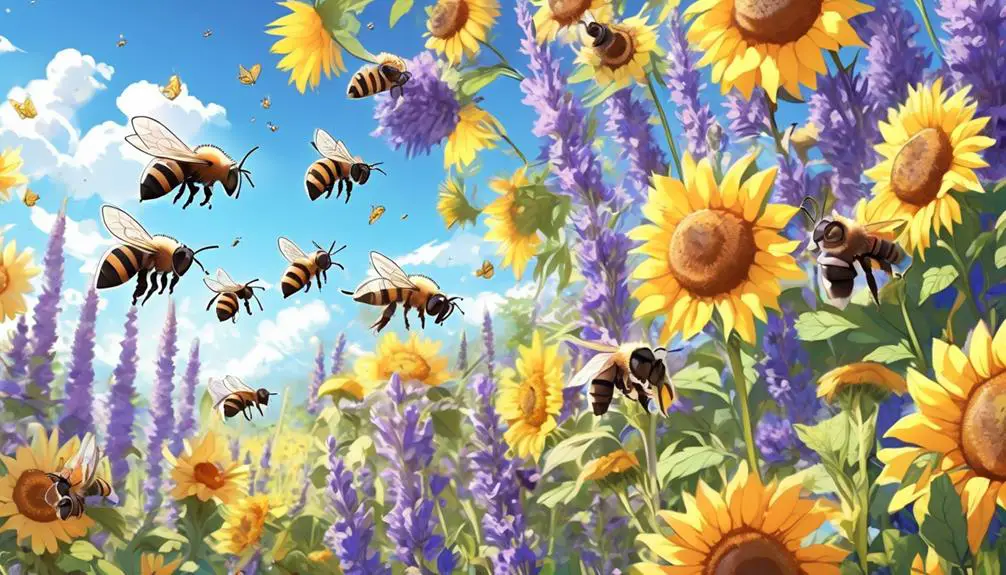
What Flowers Are Mason Bees Attracted To?
Just by coincidence, you're pondering about what flowers are most attractive to mason bees at the same time as we're discussing it.
It's no secret that these little pollinators have a penchant for certain blooms over others. You'll find that mason bees, unlike some other species, are attracted to a variety of flowers.
The key to their preference lies not only in the type of flower, but also in color, scent, and even location.
So, which floral varieties might transform your garden into a mason bee haven? We're about to explore just that, and the answer might surprise you.
Key Takeaways
- Mason bees are attracted to native plants, particularly those in the daisy family like sunflowers and asters.
- Fruit-bearing plants like berry bushes, apples, and cherries are also favored by mason bees.
- Salvia species with tubular flowers rich in nectar are a prime choice for these bees.
- Lavender and rosemary, with their fragrant flowers, are also favored by mason bees.
Understanding Mason Bees

Before you can fully appreciate the flowers that attract mason bees, it's crucial to understand these fascinating insects in depth. Mason bees, part of the Osmia genus, are solitary insects. Unlike honeybees that live in hives, each female mason bee operates independently, making her own nest and raising her offspring. They're named 'mason' because of their unique nesting behavior; they use mud to construct their nests, similar to a mason laying bricks.
You'll find them in various habitats, ranging from forests to urban gardens. They're most active in the spring, darting between flowers in search of nectar and pollen. They're known for their exceptional pollination abilities, often outperforming their hive-dwelling counterparts. The reason? Their hairy bodies capture pollen more efficiently, and they've a unique 'belly-flop' technique wherein they dive onto a flower, spreading pollen effectively.
Understanding their life cycle, behavior, and habitat preferences is pivotal. They prefer small cavities for nesting, often taking up residence in hollow stems or man-made bee houses. Recognizing these nuances can help you create an inviting environment for these industrious pollinators, multiplying your garden's productivity.
Top Flowers for Mason Bees
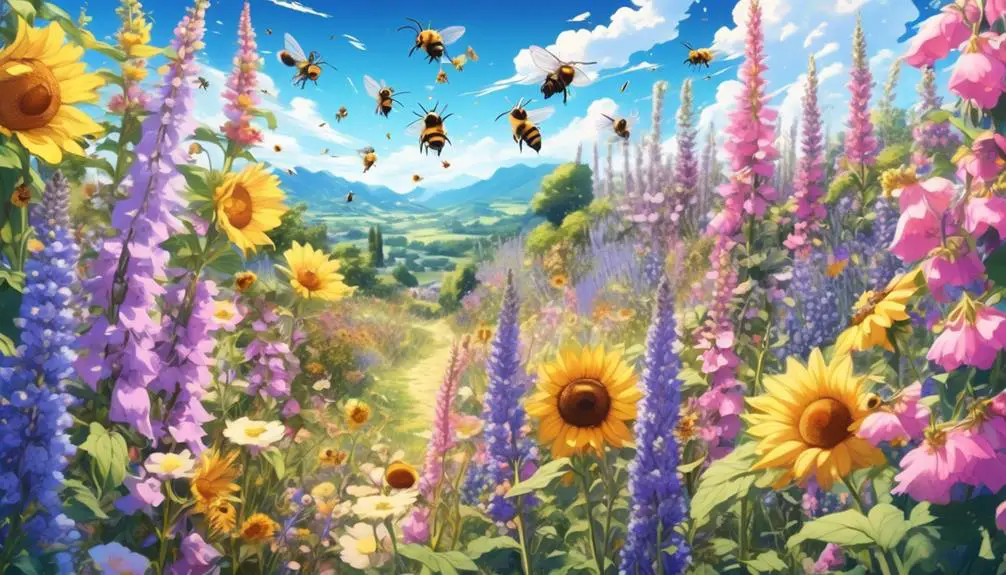
Now that you have a good grasp of mason bees' habits and preferences, let's explore the top flowers that can attract these industrious pollinators to your garden.
Foremost, mason bees are drawn to native plants. They particularly favor the daisy family, Asteraceae, with plants such as sunflowers and asters. These flowers' open-faced structure facilitates easy access to pollen and nectar, crucial resources for mason bees. They're also attracted to fruit-bearing plants like berry bushes, apples, and cherries, which offer abundant blossoms in spring when mason bees are most active.
Another plant worth mentioning is the Salvia species. Its tubular flowers are rich in nectar, making it a prime choice for these bees. Herbs such as lavender and rosemary are also favored, as their fragrant flowers provide ample nectar and pollen.
Lastly, don't overlook the role of flowering trees and shrubs. They provide a high volume of blooms in a condensed space, making them efficient food sources. Maples, willows, and redbuds are top choices.
Planting for Mason Bee Attraction
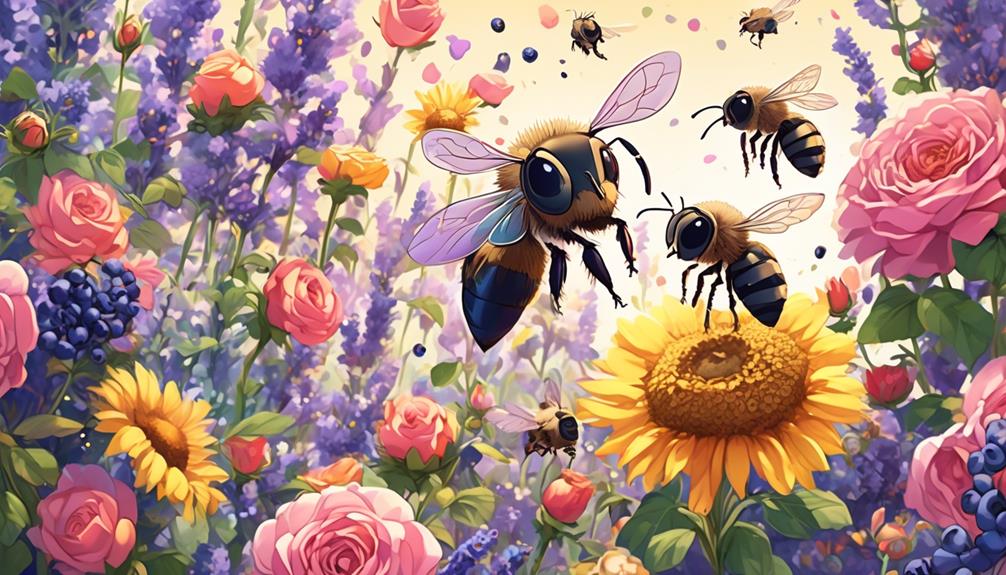
Armed with knowledge of mason bees' preferred flowers, you're ready to optimize your garden to attract these useful pollinators. To boost your success, you should consider the bees' life cycle and habitat requirements when planning your garden layout.
Bee-friendly gardens typically have an assortment of early, mid, and late-blooming plants to provide a continuous food source. For instance, planting willows, cherries, and maples for early blooms, followed by summer-blooming plants like sunflowers and lavender would ensure a continuous food supply for mason bees.
Spacing is vital. Mason bees have a foraging range of about 300 feet, so you'll want to plant these flowers within this range. Also, consider their nesting habits. Mason bees prefer to nest in pre-existing holes, so providing nesting blocks or tubes can increase your garden's appeal.
Your garden's success in attracting mason bees also depends on the absence of pesticides. These can harm or kill bees, so it's crucial to use organic pest control methods instead.
The Role of Color and Scent
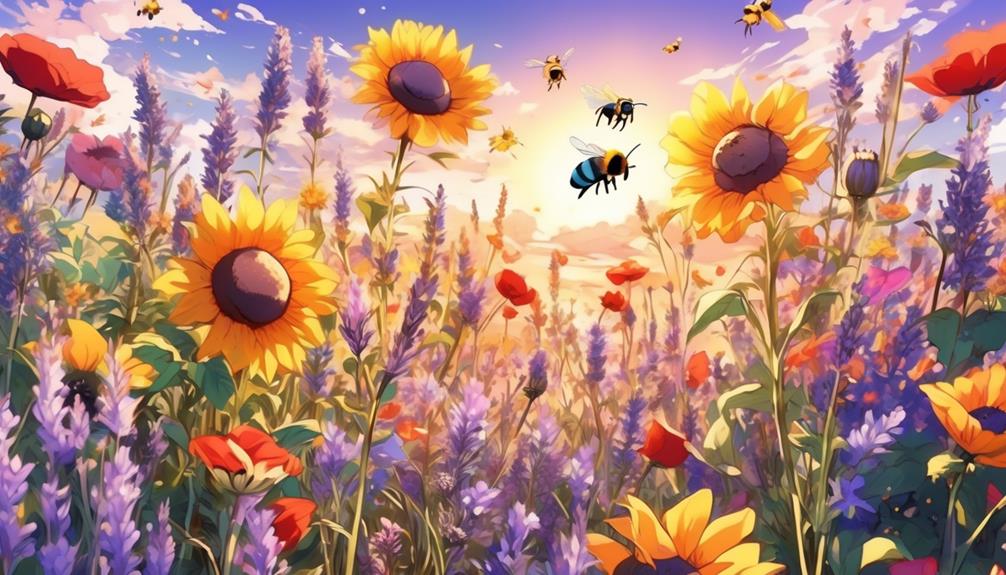
While planning your garden layout and avoiding pesticides are key factors in attracting mason bees, it's equally important to understand that these pollinators are also significantly influenced by the color and scent of flowers.
Scientific studies have shown that mason bees are particularly attracted to flowers in the blue-violet to ultraviolet spectrum. This is due to their unique ability to see ultraviolet light, a capability not shared by humans. Thus, planting flowers like lavender, salvia, or aster can be particularly effective in luring these bees to your garden.
The scent of a flower also plays a crucial role in attracting these insects. Mason bees rely heavily on their sense of smell to locate flowers rich in nectar and pollen. They're particularly drawn to flowers with strong, sweet scents. Some flowers known for their attractive fragrances include roses, honeysuckle, and jasmine.
Encouraging Mason Bee Pollination
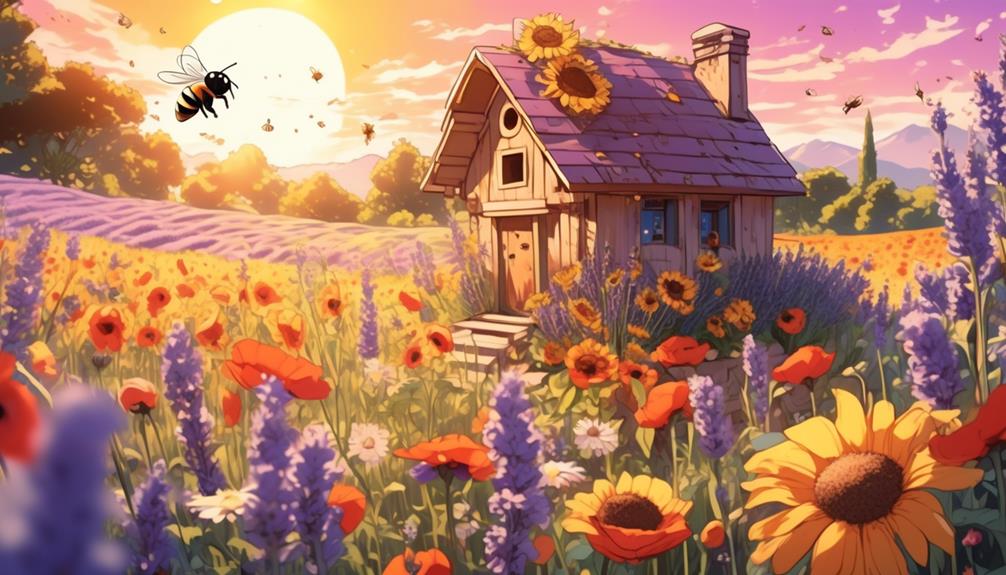
To boost mason bee pollination in your garden, it's crucial to understand the specific conditions these industrious insects thrive in and to provide them with the necessary resources. Mason bees are solitary creatures, preferring to nest in small holes and crevices. They're not fussy about where they nest, so you can encourage their presence by providing a bee house filled with small tubes or drilled holes.
As for food, Mason bees prefer a diverse range of flowers, particularly those native to your region. Ensure you've got a variety of blooms throughout the seasons to provide a constant food source.
Consider this table summarizing the key elements:
Factors | Description |
|---|---|
Nesting | Provide a bee house with small tubes or drilled holes |
Food | Plant a variety of native flowers for a constant food source |
Water | Ensure a fresh water source is available |
Conclusion
In conclusion, boosting mason bee populations is crucial for ecological balance.
You're part of this mission by planting flowers they love, like sunflowers, lavender, and many more. Color and scent play a pivotal role in attracting them.
Your garden can become a haven for these diligent pollinators, promoting biodiversity. Remember, it's not just about planting flowers – creating a bee-friendly habitat is key.
Knowledge is power in your journey to support these essential insects.


